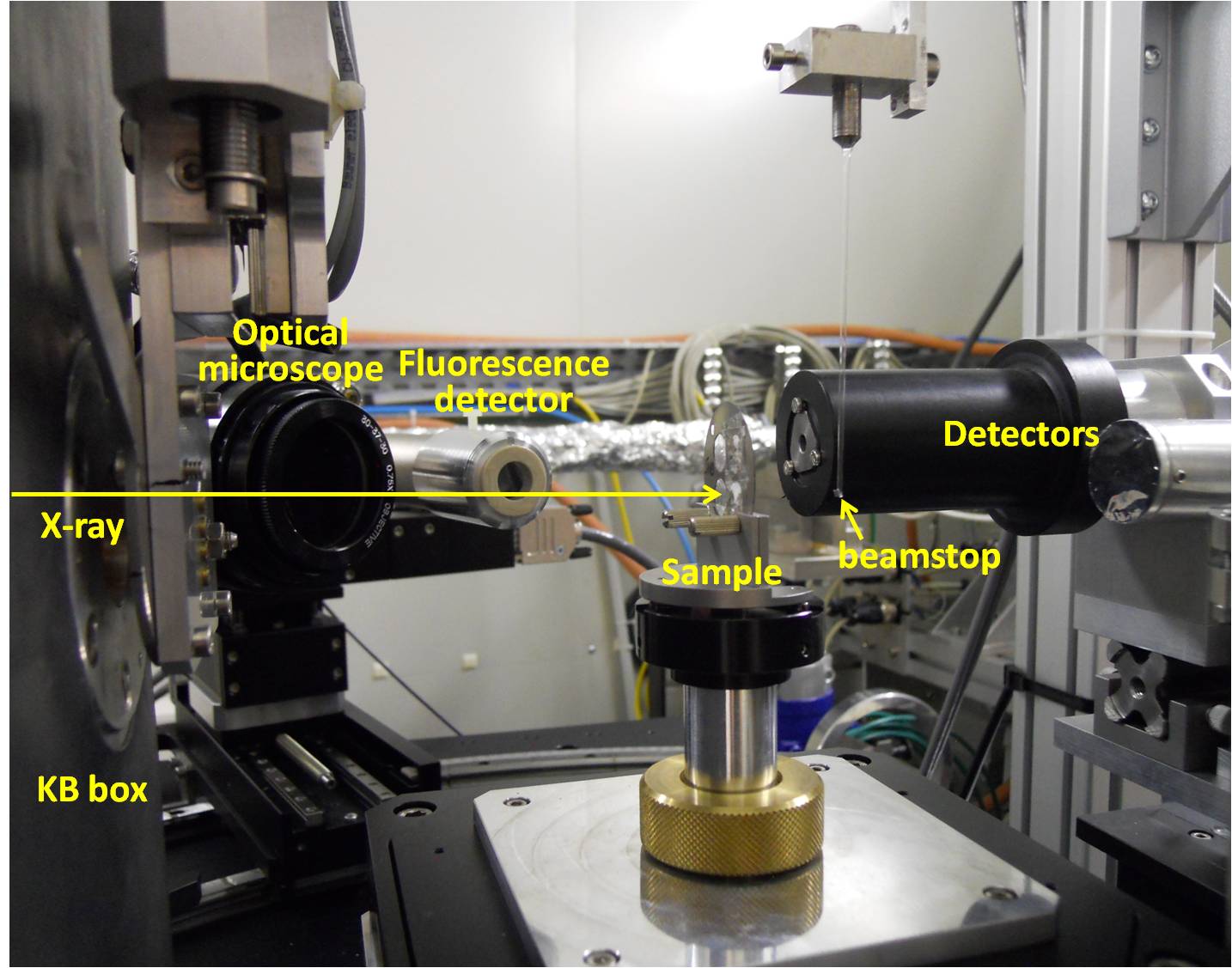Micro-diffraction end-station

Micro-diffraction end-station (the FReLoN detector comes instead of the current detectors).
Focusing optics
The end-station is equipped with a Kirkpatrick-Baez mirror system (KB), which routinely achieves a typical spot size of 1 × 2 (v × h) µm2 with a flux of 4.1010 photons/s (monochromatic beam at 200mA SR current). The KB box is under N2 flow.
Optical microscopes
Two optical microscopes with motorized zoom allow visualizing the sample and aligning the desired region of interest in the beam. The first one is placed upstream the sample and is orthogonal to the plan of the sample (a hole in the mirror allowing X-ray beam to pass and have the image of the microscope at the same time). The second microscope is oriented with an angle of 45° to the incident beam (possible to increase this angle for specific setup).
Sample stage
The sample can be scanned in horizontal and vertical directions using a system of coarse mechanical xyz-stages driven by stepper motors and providing a total scan area of 30 x 40 (H x V) mm2 with resolution of 1 µm. For finer scanning resolutions, a piezo-driven xyz stage allows sample scanning over a range of 300 µm with positioning resolutions of about 10 nm.
Sample holder
Sample holders of the micro X-ray diffraction end-station are compatible with the ID21 X-ray and FTIR sample holders. It is thus easy to move the samples from one end-station to another conserving the same sample holder, without dismounting the sample. Samples must fit in 22 mm diameter disk (see SXM samples holder).
X-ray fluorescence detector
A AXAS-M Ketek 80 mm2 SDD detector using a XIA-XMAP digital pulse processor is installed on the end-station to collect fluorescence signal. The sample-detector distance and the angle between the incident beam and the SDD detector can be adjusted as a function of the sample. By contrast to ID21 X-ray microscope end-station, the micro-diffraction end-station is under atmosphere which means that the detection of the lower elements (Na, Mg, Al, Si…) will not be possible if they are not major elements.
X-ray diffraction camera
A taper FreLon detector (2048 x 2048 pixels, pixels size 52 µm) is installed downstream the sample to collect 2D diffraction patterns. The position of the detector can be adjusted in horizontal, vertical and following the X-ray beam axis to fit the geometry of the experiment (transmission/reflection) and the 2theta angle collection required. Maximum 2theta angle collection with the camera as close as possible to the sample is currently 50°2theta (corresponding to 1.72 Å).
X-ray fluorescence and X-ray diffraction signals can be collected at the same time, in mapping mode.



